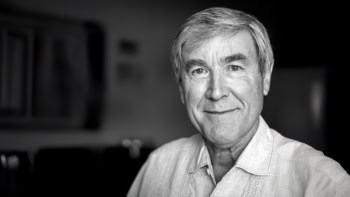To mark this year’s World Quantum Day on 14 April 2023, Leni Bascones from the Instituto de Ciencia de Materiales de Madrid in Spain talks to Faye Holst about her journey into quantum physics, her research on quantum materials, and how women are vital for the future of the field

Leni Bascones is a physicist researching quantum materials, with a focus on strongly correlated electron systems and unconventional superconductors. She is also a guest editor for the focus issue of Journal of Physics: Materials, “Women’s Perspectives in Quantum Materials”, and has been a co-editor of Europhysics Letters for three years – both of which are journals published by IOP Publishing, which also produces Physics World.
What was your route into quantum physics?
I wasn’t someone who knew as a child that they wanted to be a scientist because they liked figuring out how the world works. In fact, when I was a teenager, my plan was to be a fashion designer. Even when I had to decide what I wanted to study at university, I wasn’t sure whether to do physics or history. In the end, I chose physics because of my interest in astrophysics.
It was only in the third year of my undergraduate studies [at the Universidad Autónoma de Madrid], when I took a course on quantum mechanics, that I realized this was the topic I was most interested in. It fascinated me. Initially I went for particle physics and followed courses about that as it’s closely tied to quantum physics. But when I had to commit to a topic for my PhD, I decided to focus on quantum materials and devices, and to this day, I am very happy with my choice.
What excites you most about quantum physics?
I find the behaviours of quantum systems captivating. There are many interesting phenomena that we do not understand yet, and many surprises are constantly appearing. At present we have the possibility to engineer devices and quantum materials. Even though I do not work directly on applications, when I think about the tangible impact it can have in the world, such as digital technologies, climate change, medicine and transport, I find the potential of quantum physics extremely exciting.
What real-world problem do you hope to solve with your research?
My research focuses on strong electronic correlations and superconductivity. I am currently working on 2D moiré heterostructures, such as twisted bilayer graphene, where two carbon layers are overlaid with a relative twist.
Typically, materials have a resistance to the flow of electric current and this costs a lot of energy to overcome. But in some materials this resistance vanishes below a certain temperature – usually extremely low temperatures – and the electric current can flow without losing any energy. The vanishing of resistance is one characteristic of superconductivity, which happens because the electrons enter a co-operative state in which they join in pairs. This is surprising because electrons are charged particles and repel each other.
Superconductivity has a lot of applications, from building motors, sensors and trains, to medical imaging and quantum computation, as well as being used for creating strong magnets, or conducting and accumulating electric currents without energy cost.
In a certain type of superconductor, superconductivity emerges because of the interactions between the electrons and the atomic lattice. But this explanation does not work in so-called “unconventional superconductors”, which in many cases superconduct at higher temperatures. In these materials the appearance of superconductivity is surprising because the attraction between the electrons in pairs could actually be due to repulsion between the charged particles.
It would be really fun to fully understand the insights and mechanisms of unconventional superconductivity, and predict or engineer new materials with high-temperature superconductivity. This is an important and fascinating quantum problem that physicists have been trying to explain for almost 40 years. With new, highly tunable 2D superconducting devices that have been discovered recently, such as the moiré heterostructures, many new superconducting systems can be designed, and finding an explanation for this phenomenon seems closer.
What unique qualities can female researchers like yourself bring to quantum physics?
Women have talent, intuition and perseverance, and we cannot lose these attributes. We need more woman to advance in the basic knowledge and applications of quantum physics.
At present we are losing many talented women from pursuing a career in quantum. They face more difficulties to advance in science, often due to unconscious behaviours from colleagues. Also, fewer women choose quantum physics due to stereotypes and lack of encouragement. But women are uniquely placed to help advance quantum physics by creating a more collaborative and welcoming research environment. Too much competition and ego lead to scientific practices that increase the noise and delays our ability to solve quantum problems.
What do you see as the future of quantum physics?
We are living in a time of many opportunities. Quantum will grow and we are now conscious of the technologies we can invent using quantum physics. Developing applications will be a key element of research over the next few years, but it will go wrong if we reduce the importance we place on basic science. History shows us that the most disruptive technologies emerge from basic science discoveries, not by searching for applications.
Do you think we’re currently in a quantum bubble that is about to burst?
We are now talking a lot about quantum, in the same way that we once talked a lot about, say, nanotechnology. Many applications and new knowledge will emerge. Maybe these applications and developments are not the ones that we have in mind at this moment, but our understanding of quantum will evolve. That doesn’t mean that the bubble will burst, but we should not focus our funding and efforts on a very narrow set of choices. For example, some funding agencies concentrate their support on very specific quantum technologies and forget about the quantum materials that underpin them. Or the agencies fund projects only if they are linked to specific applications. That’s a mistake given that quantum materials are going through a revolution right now.



